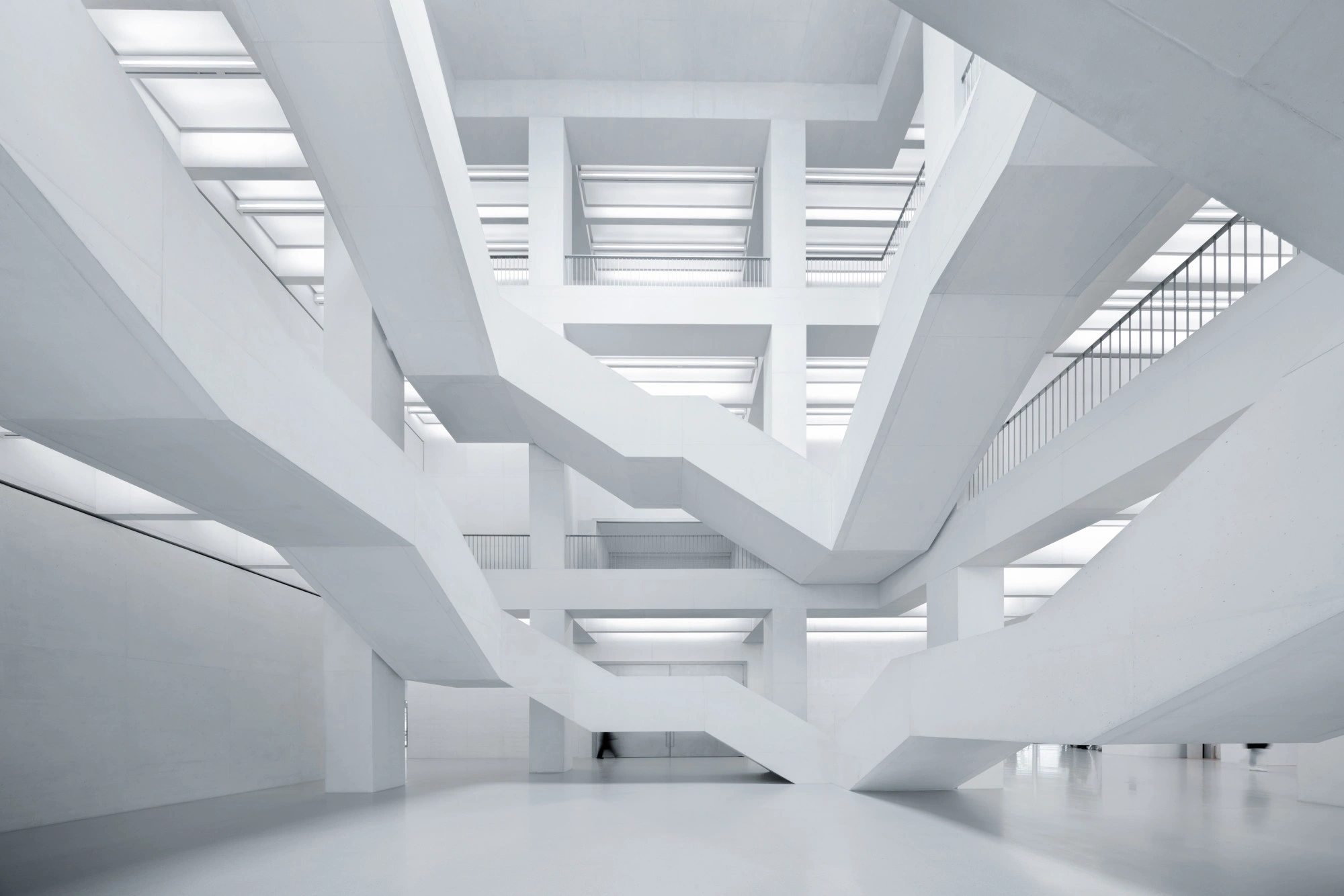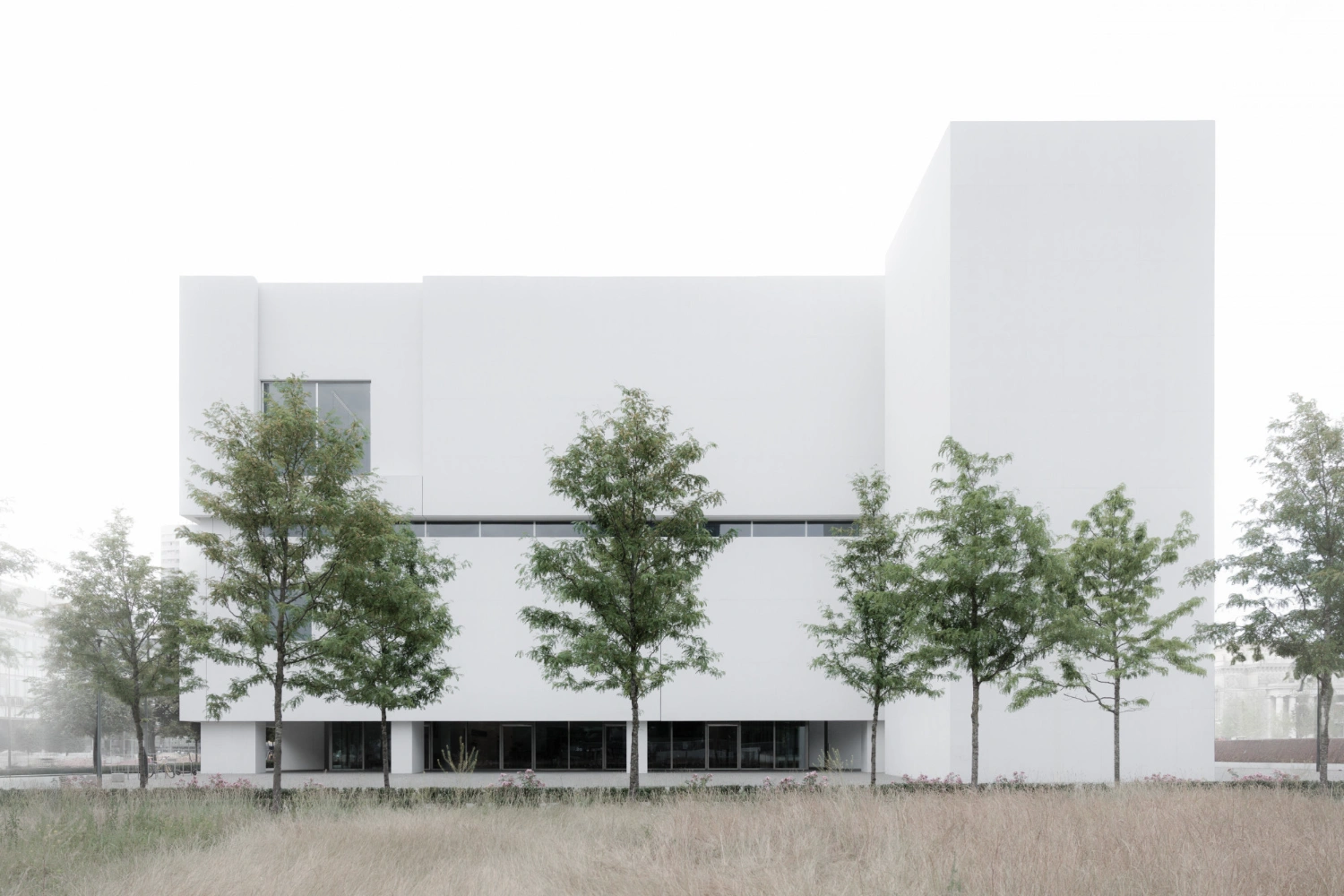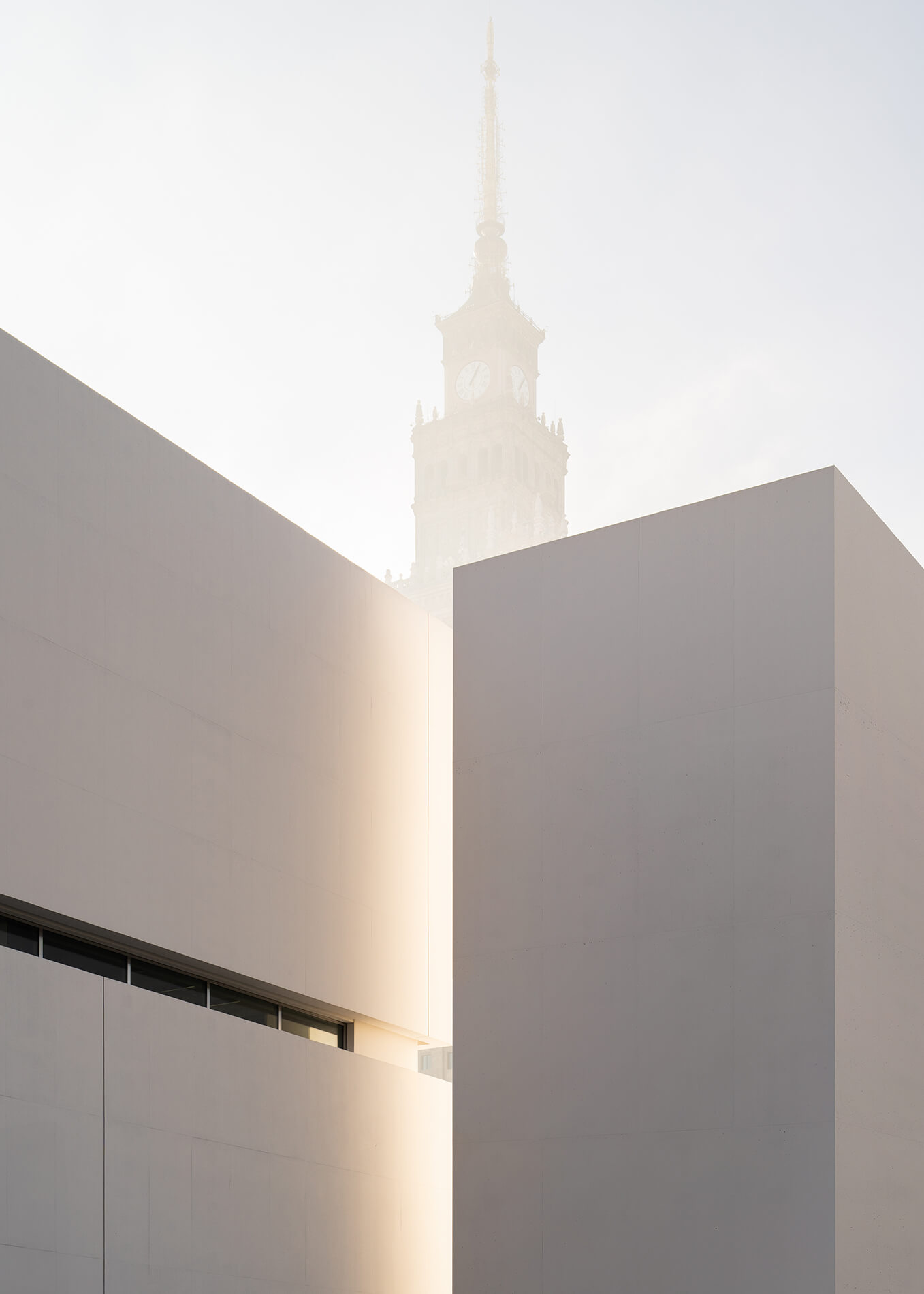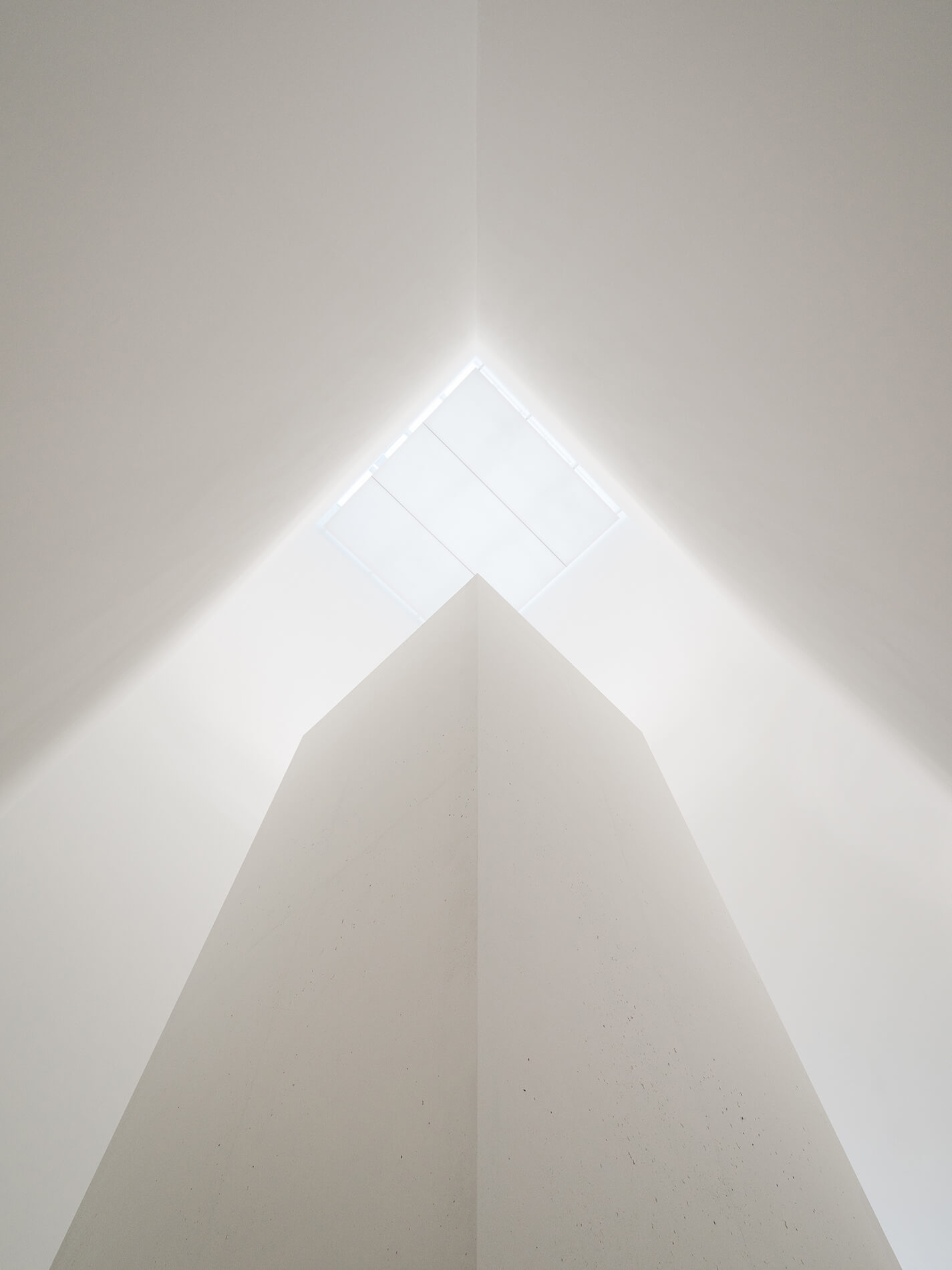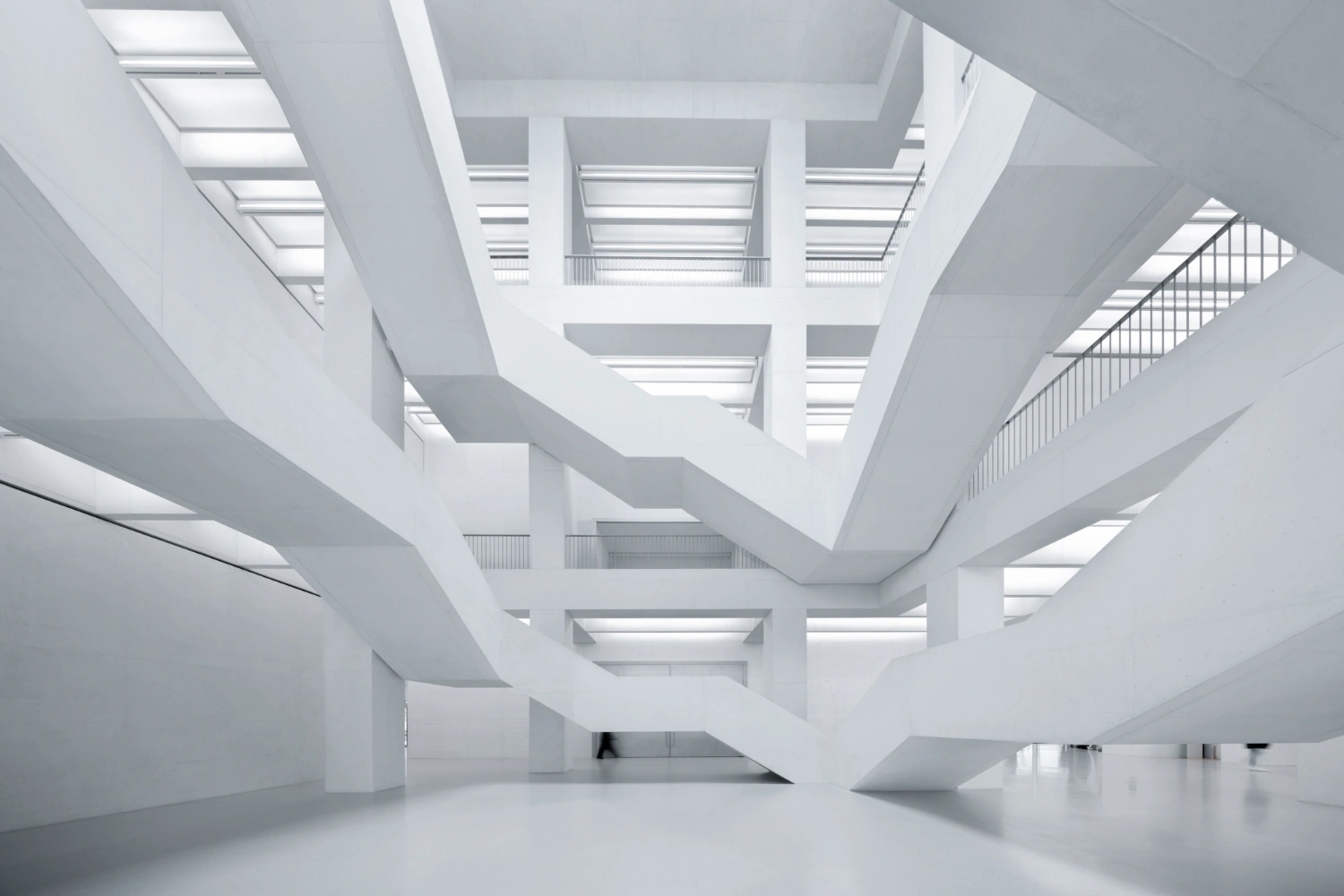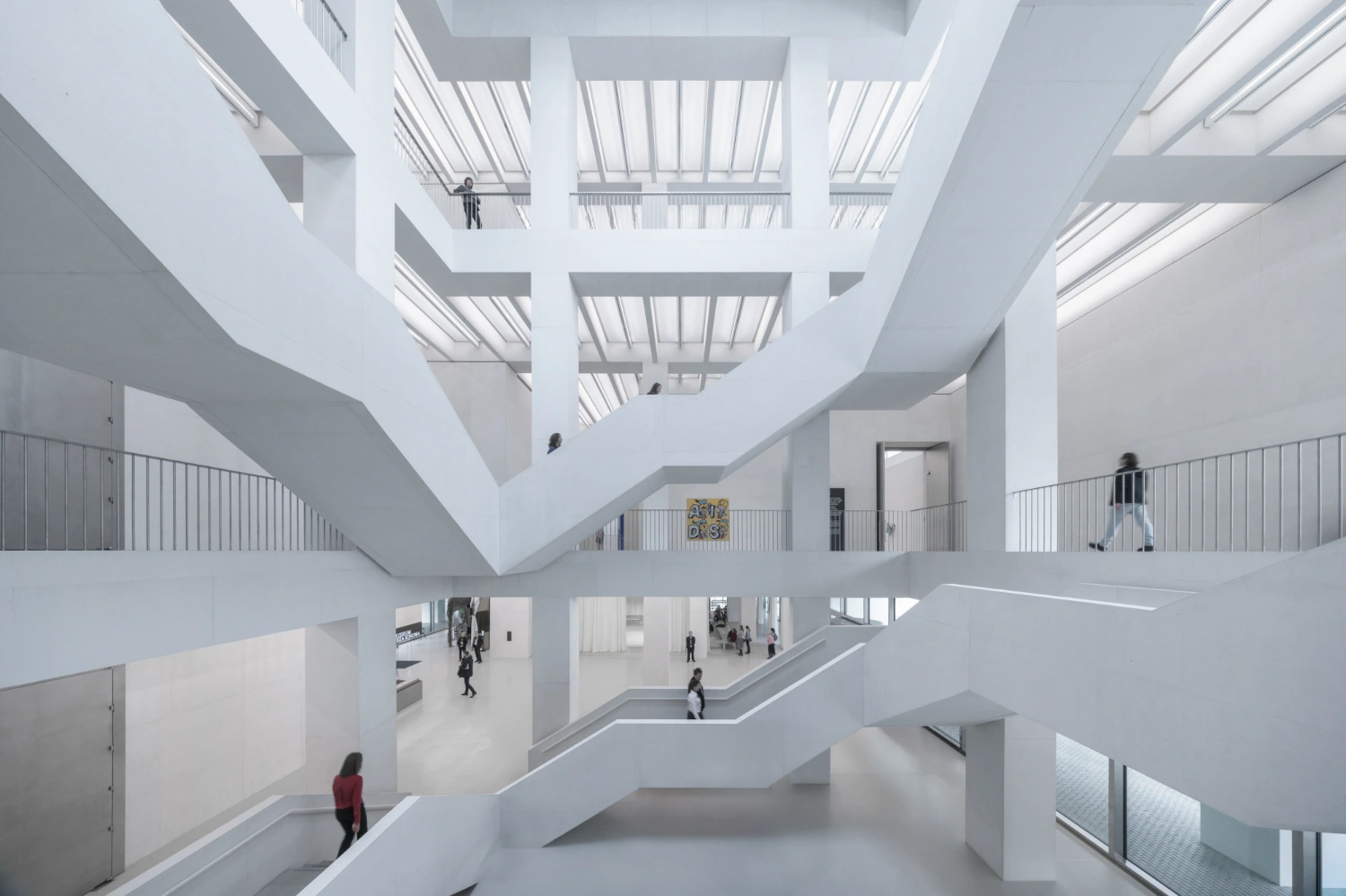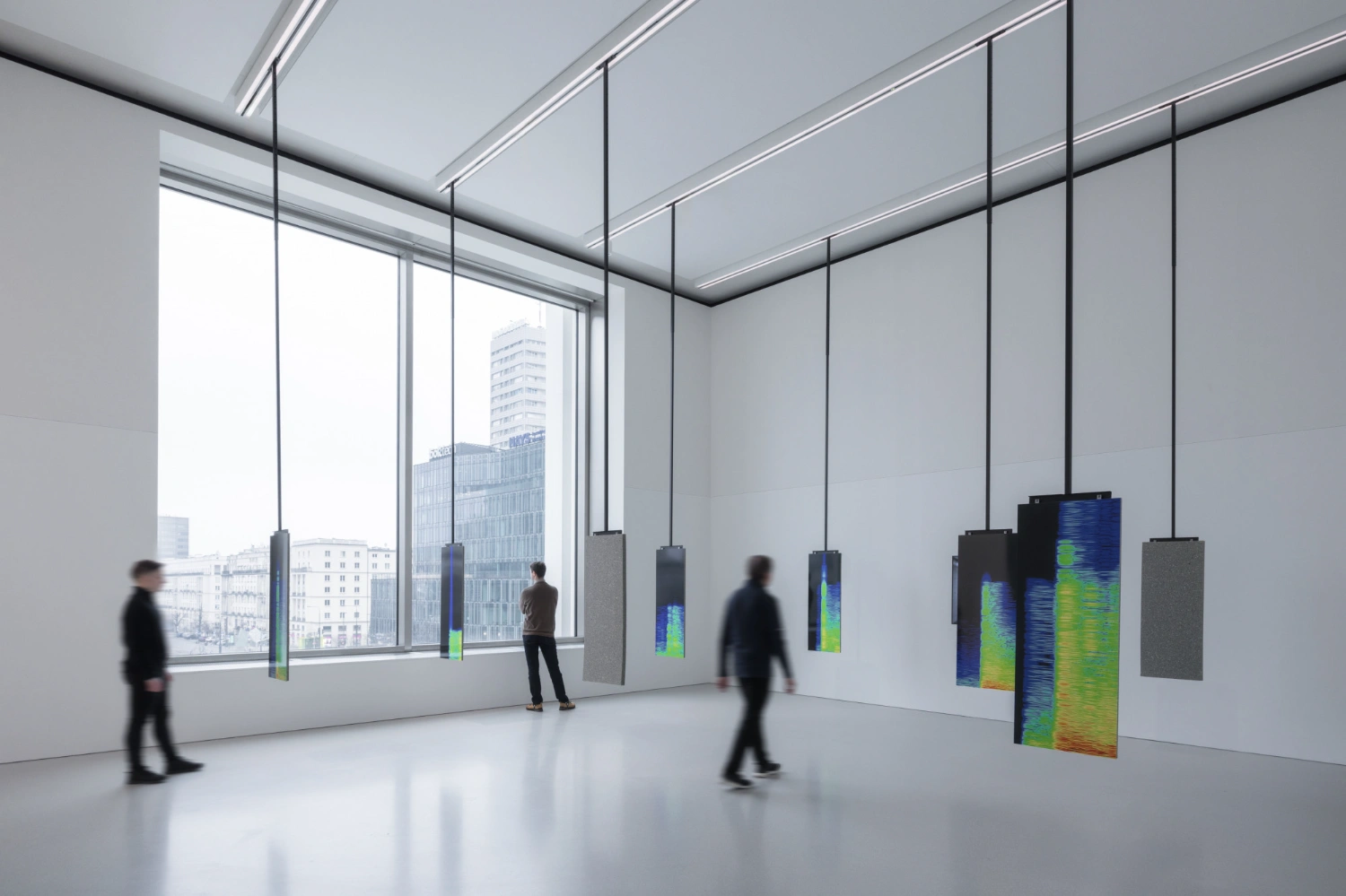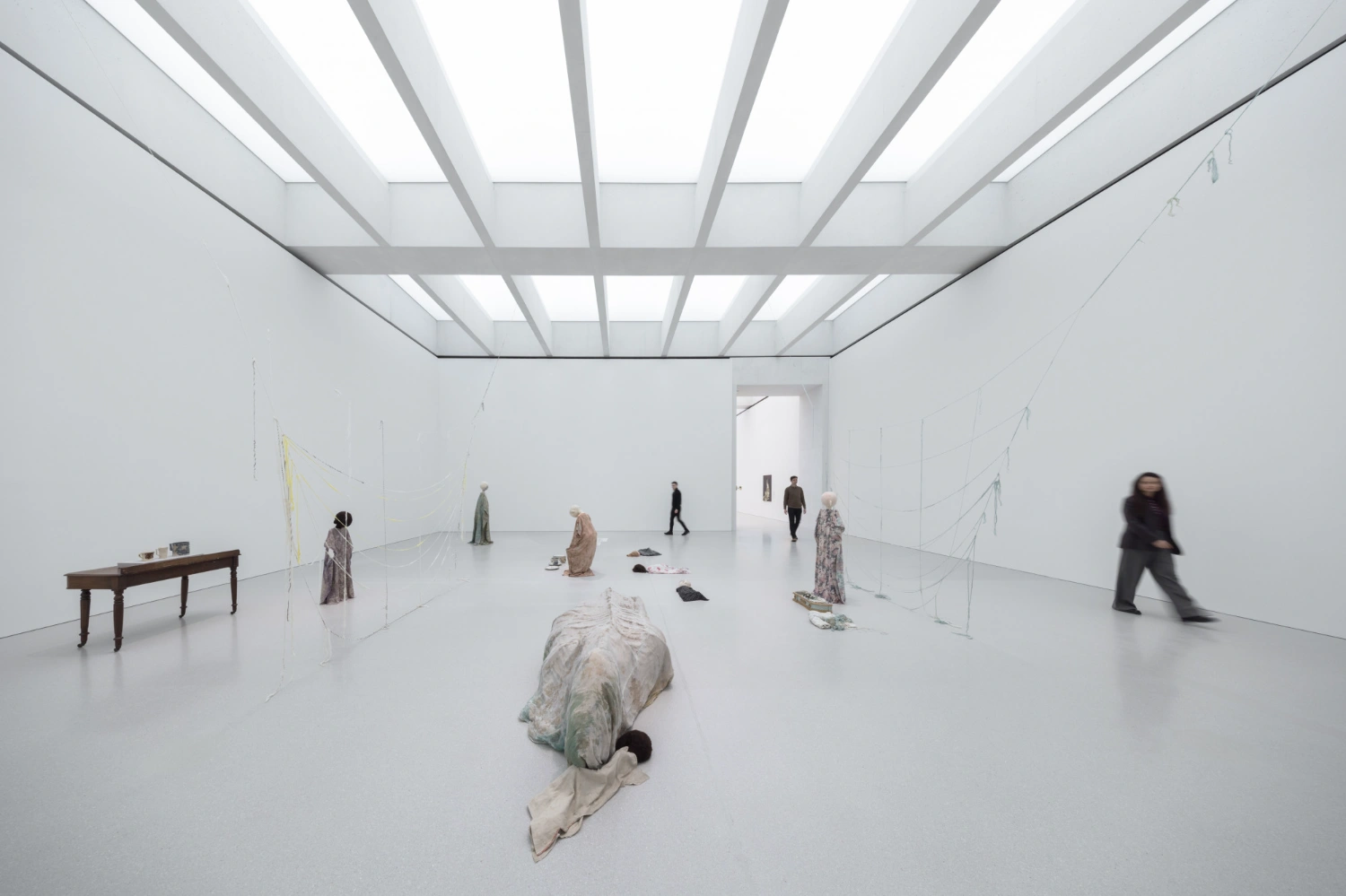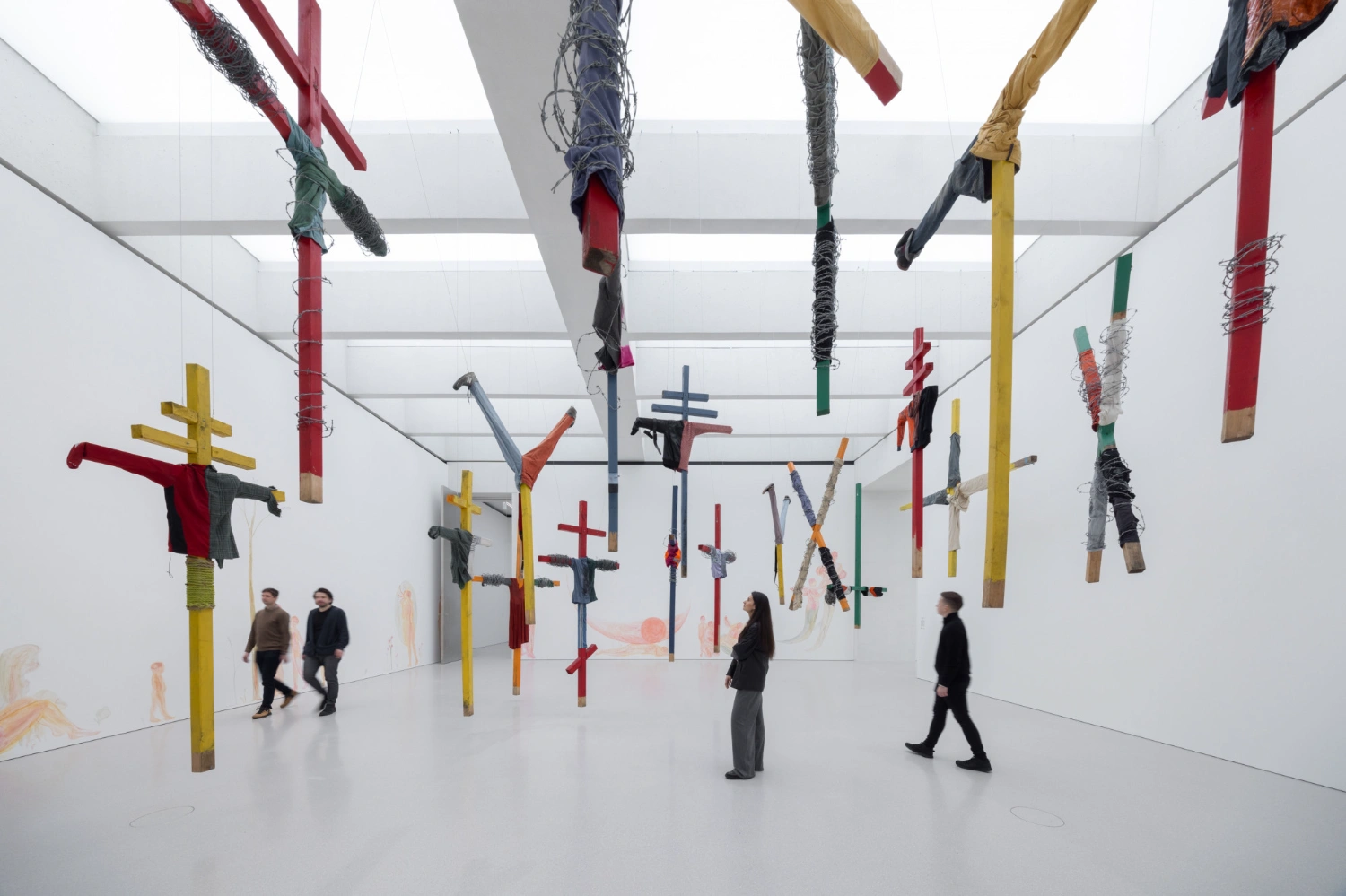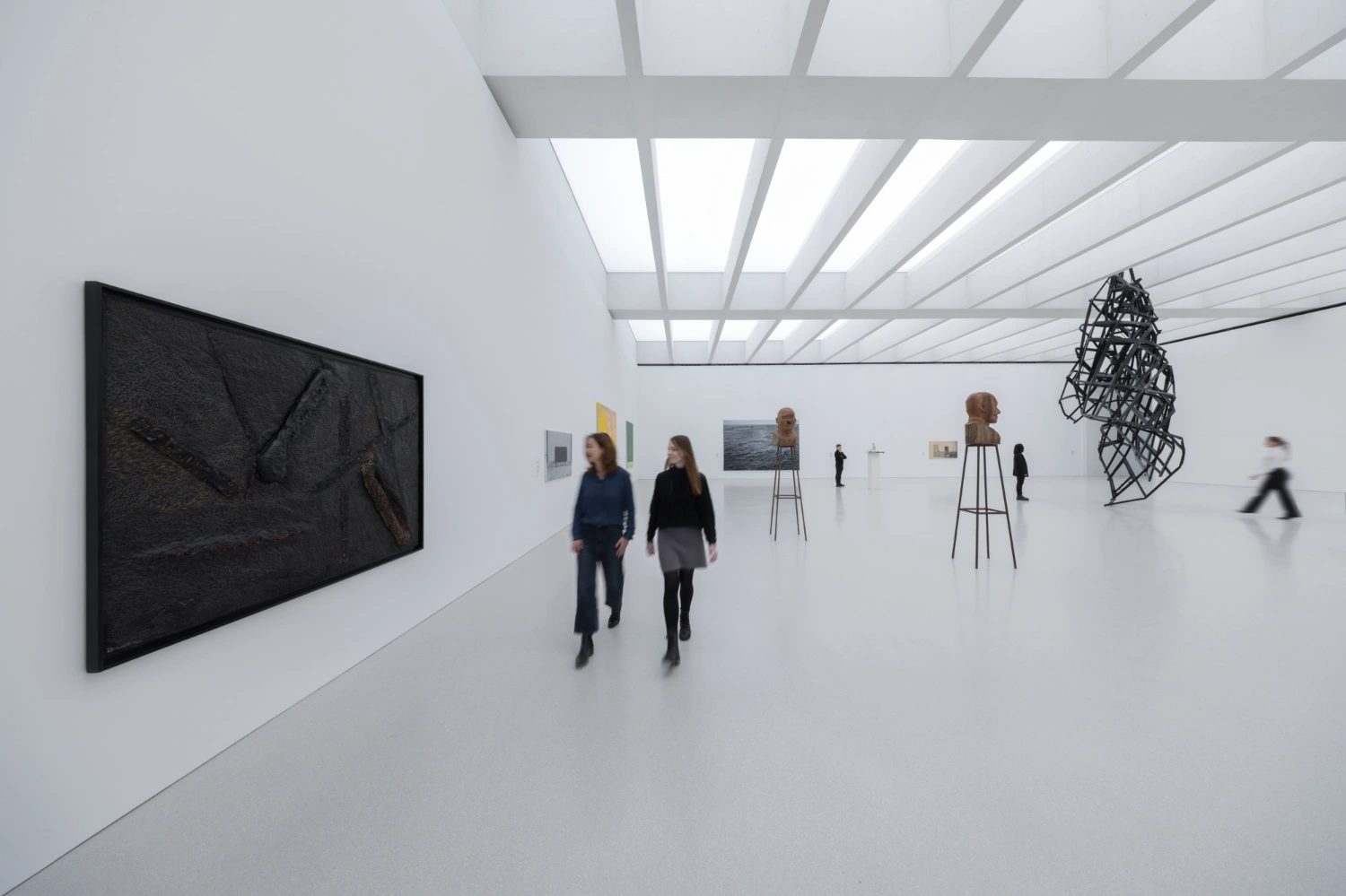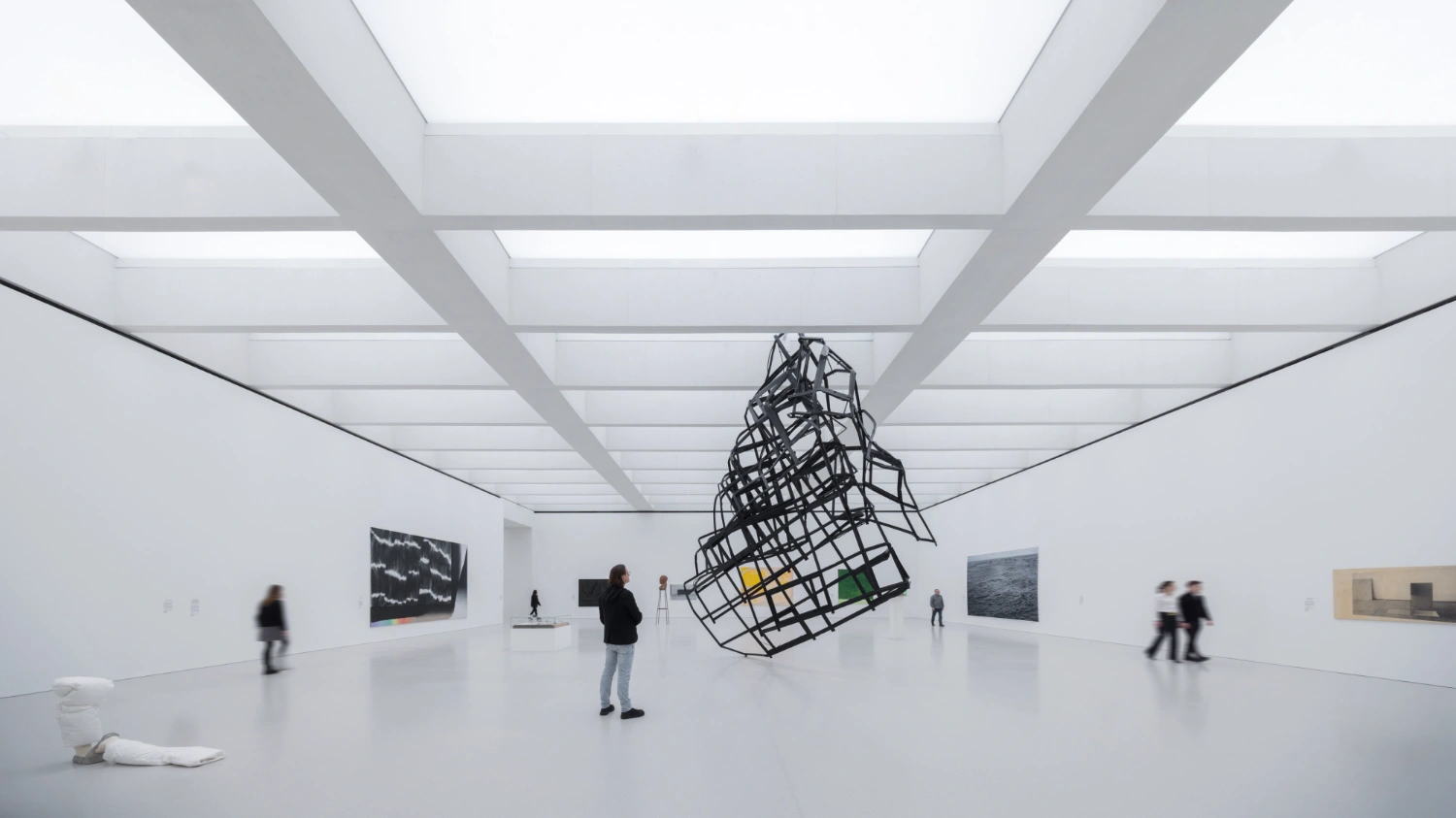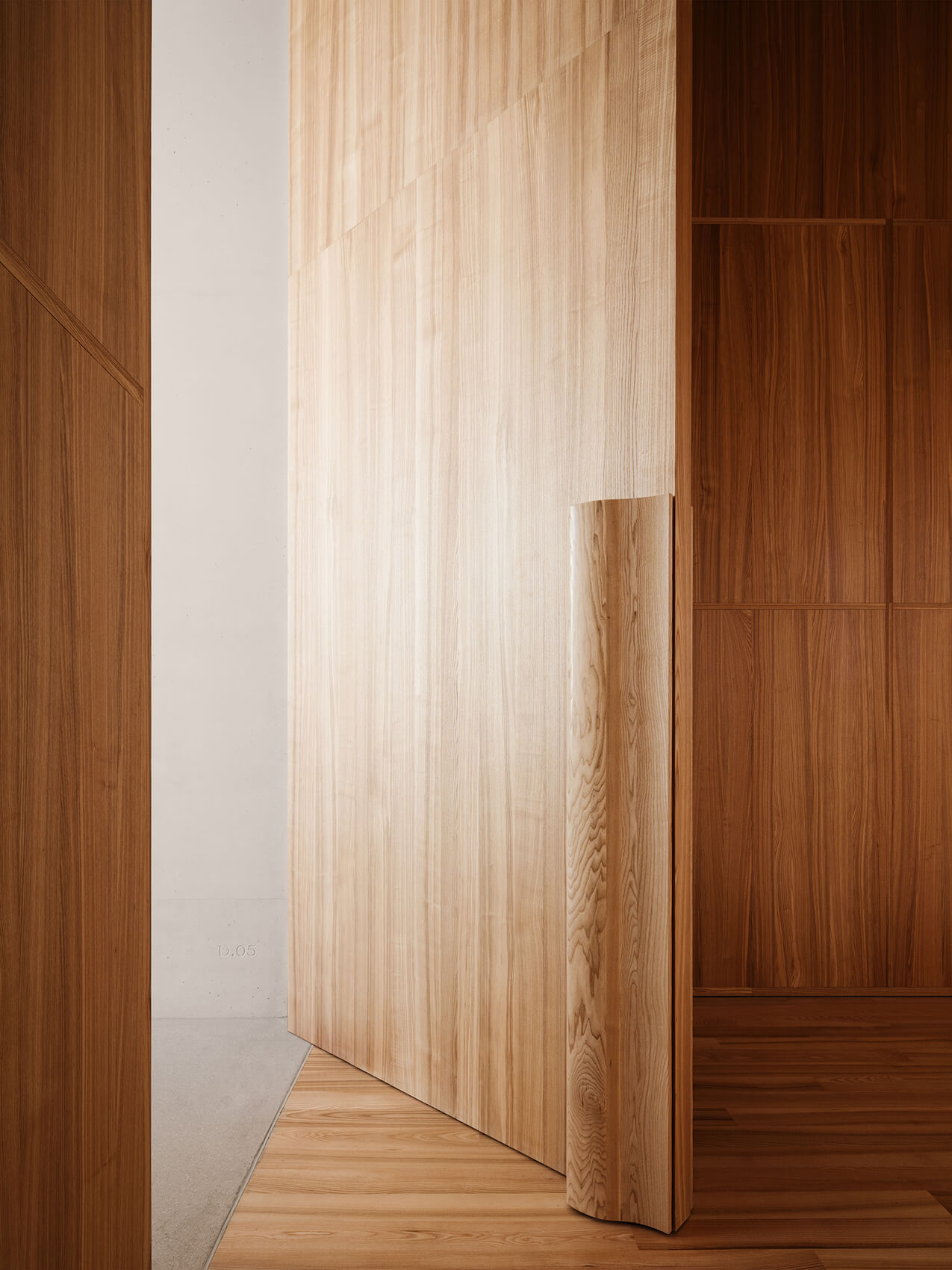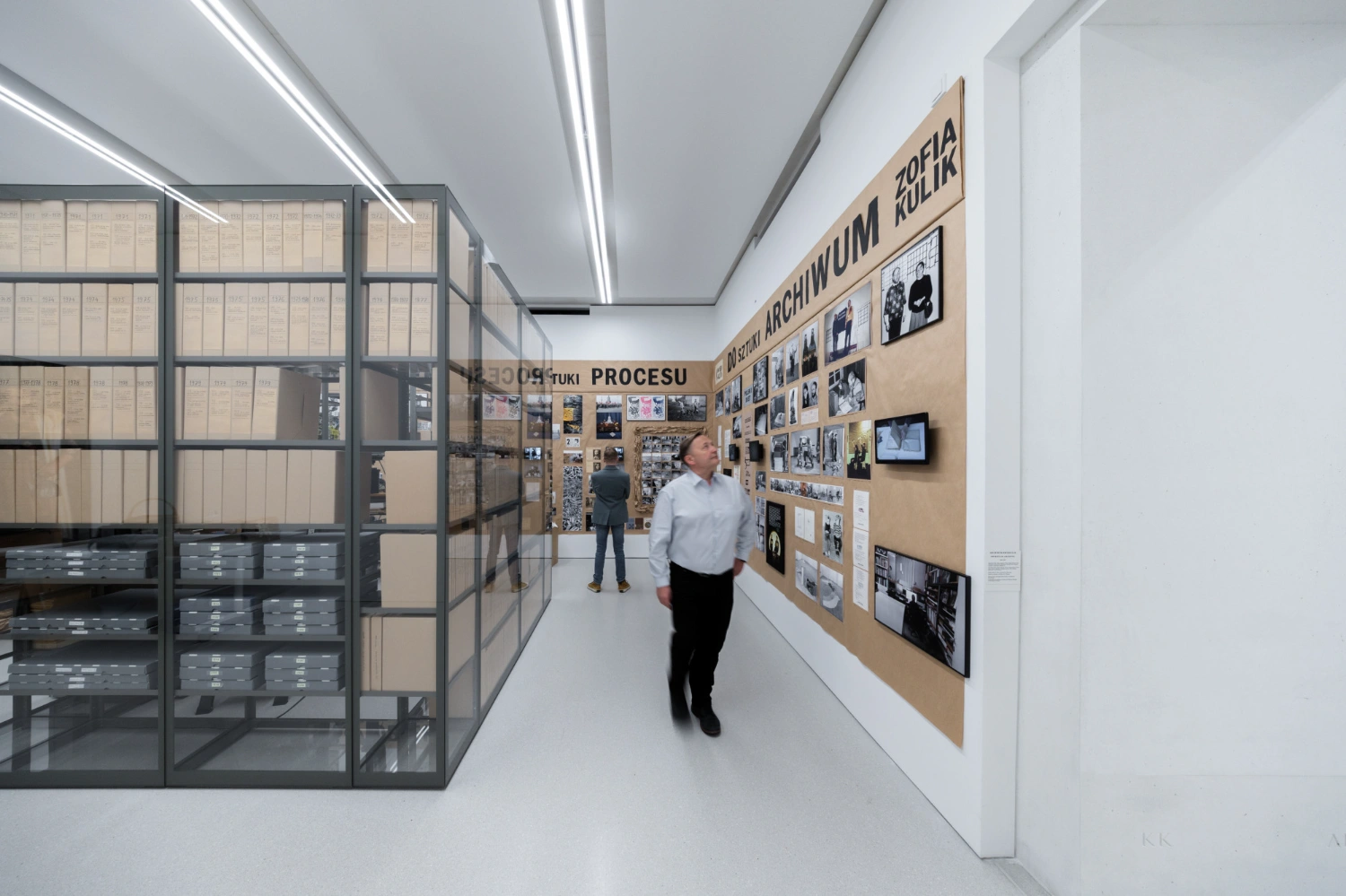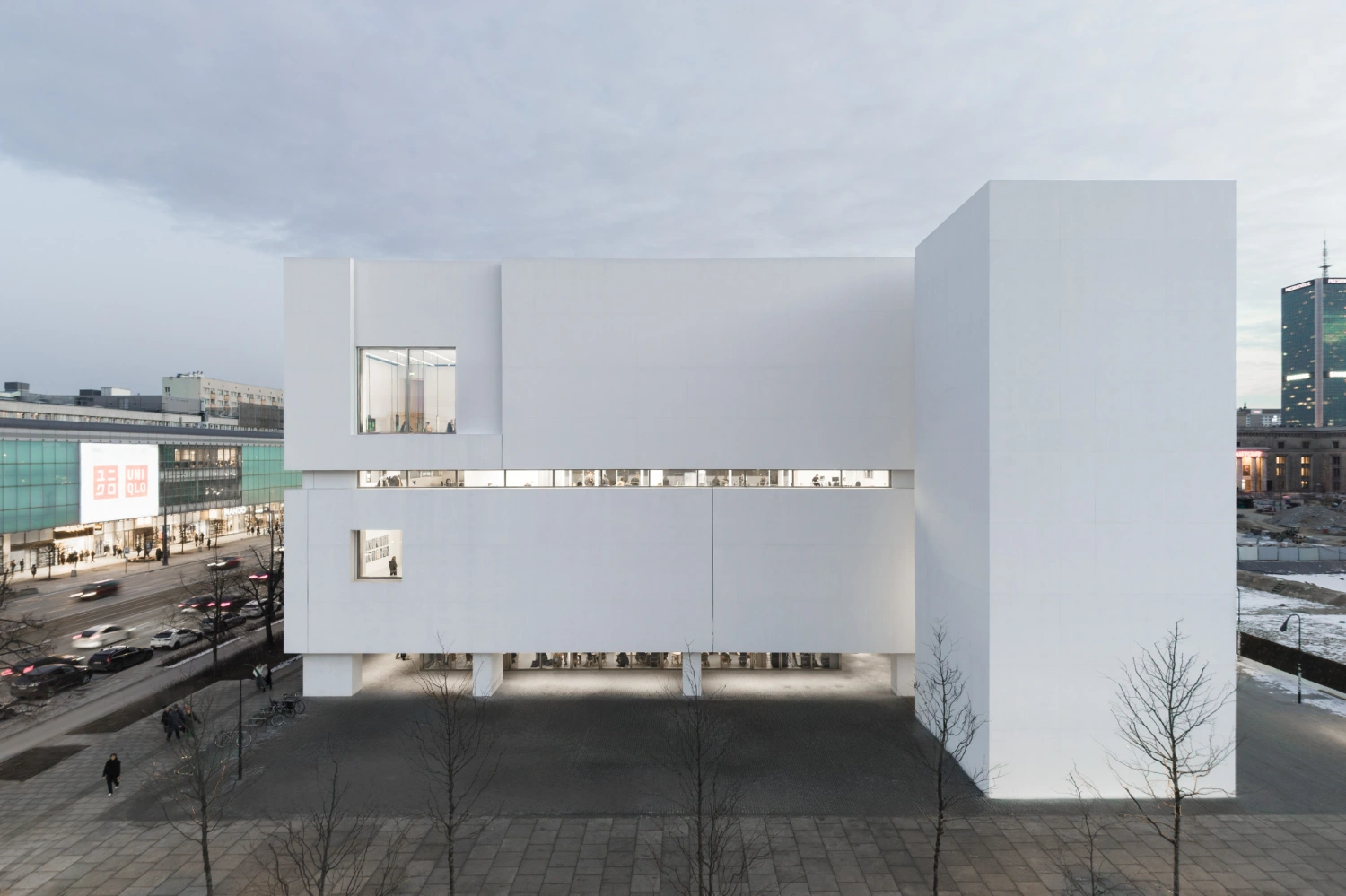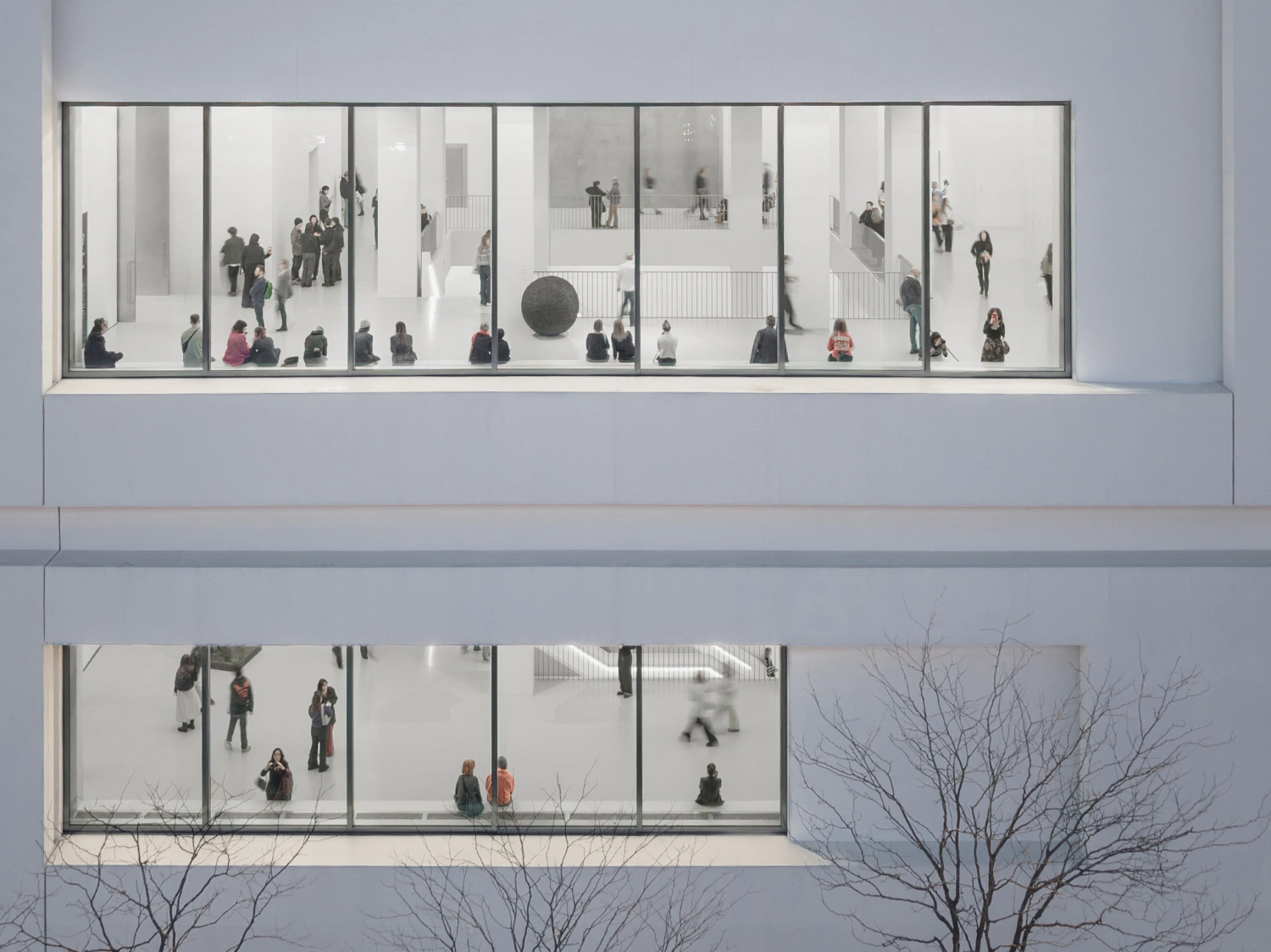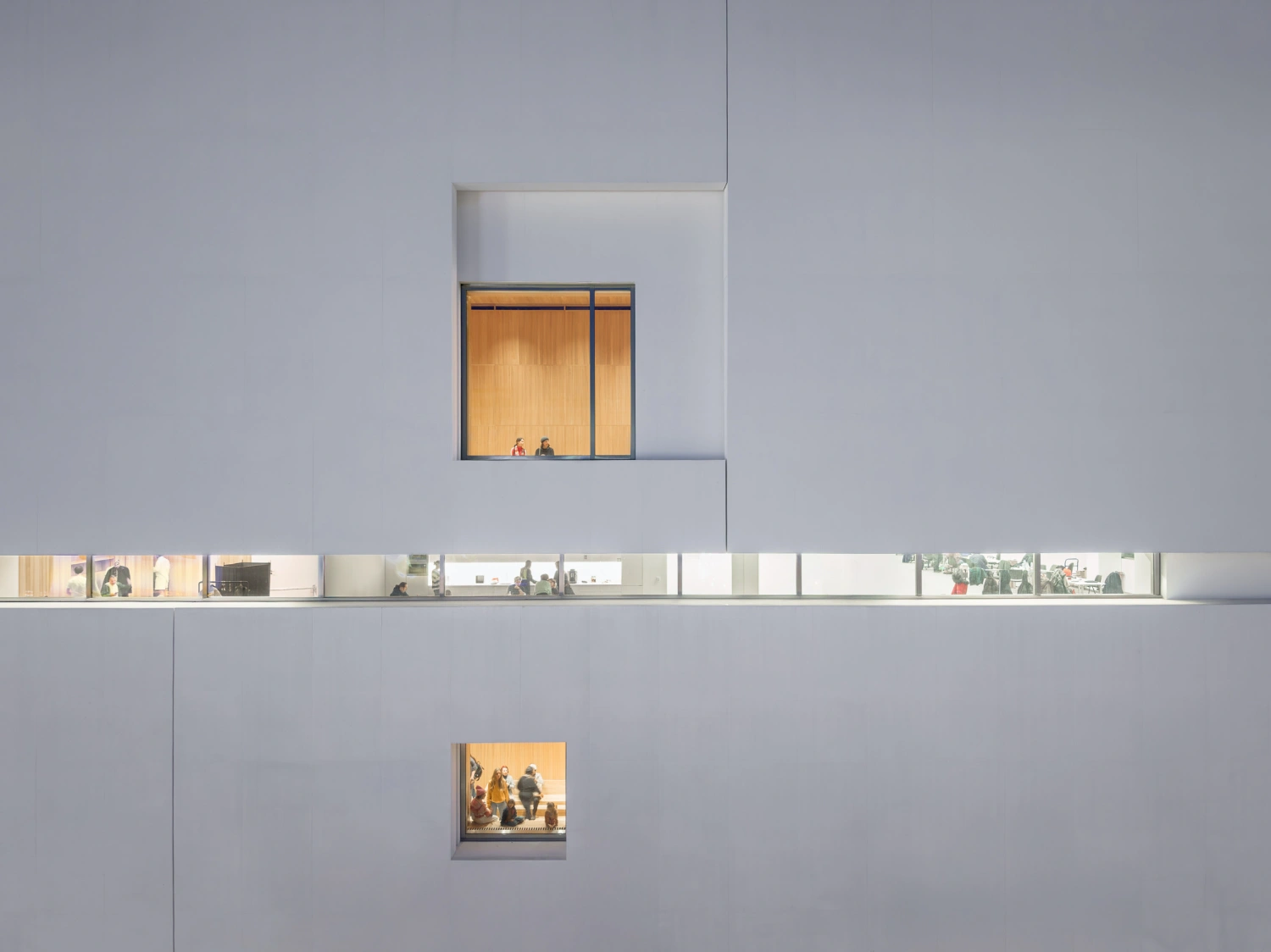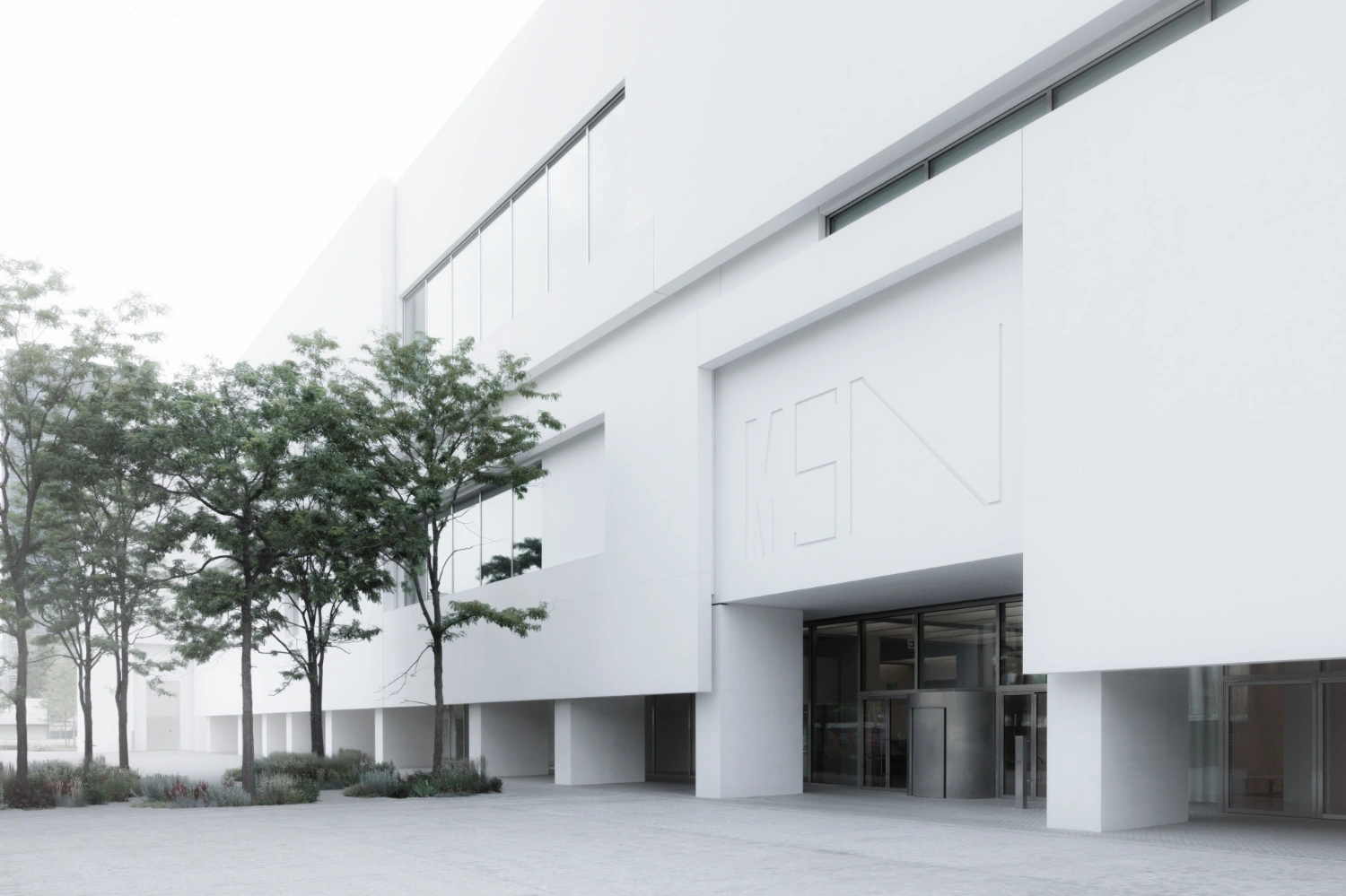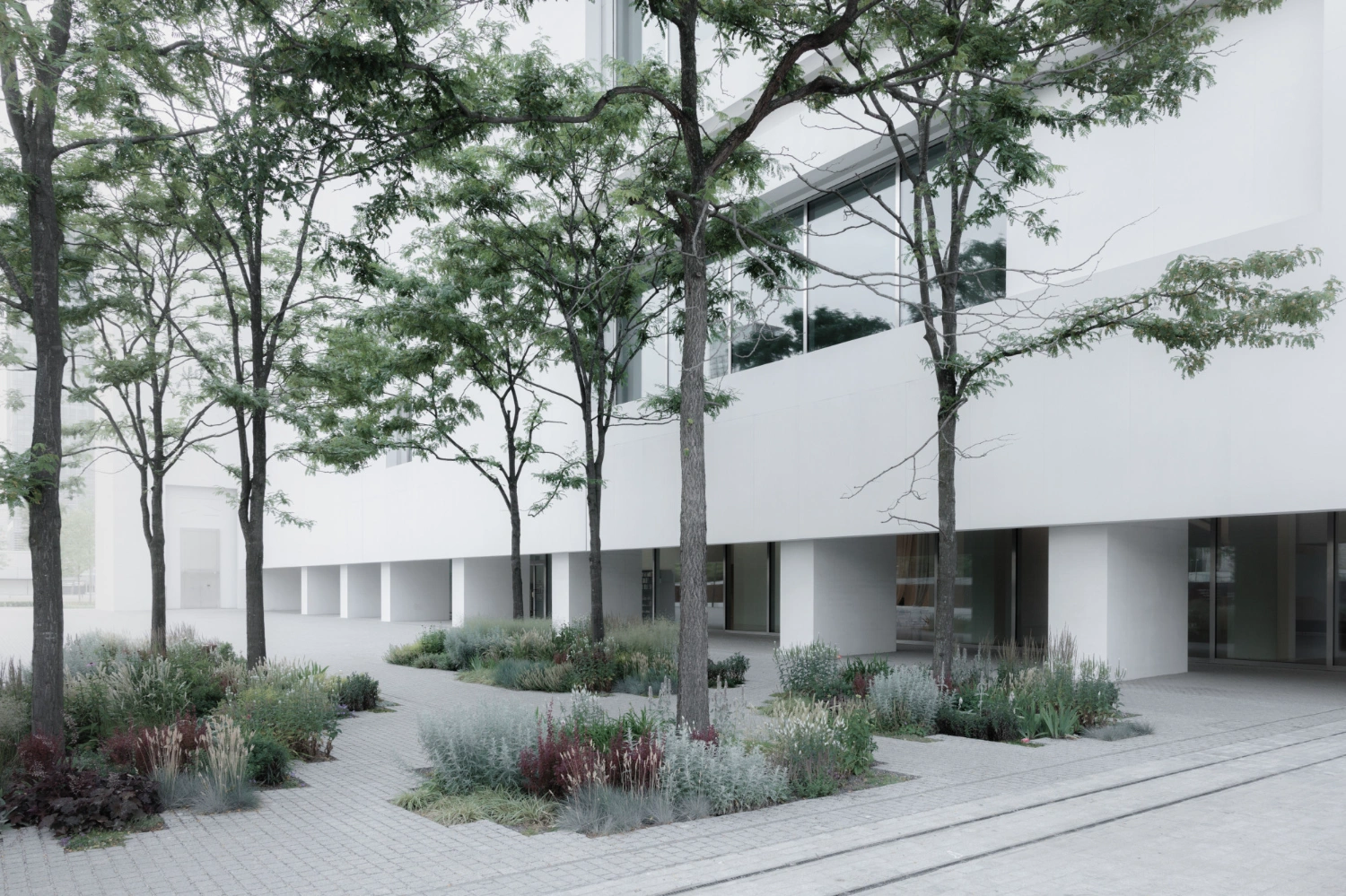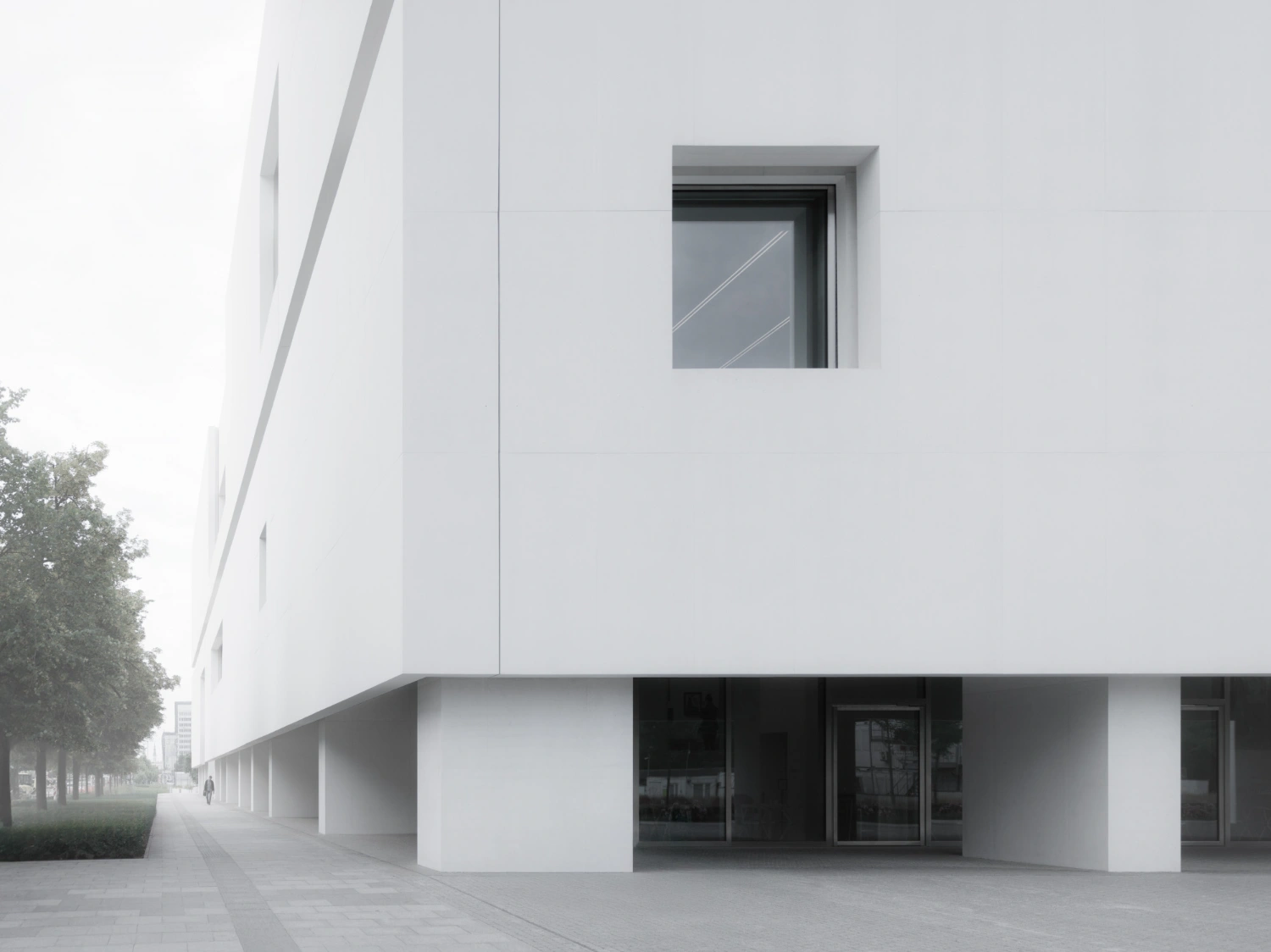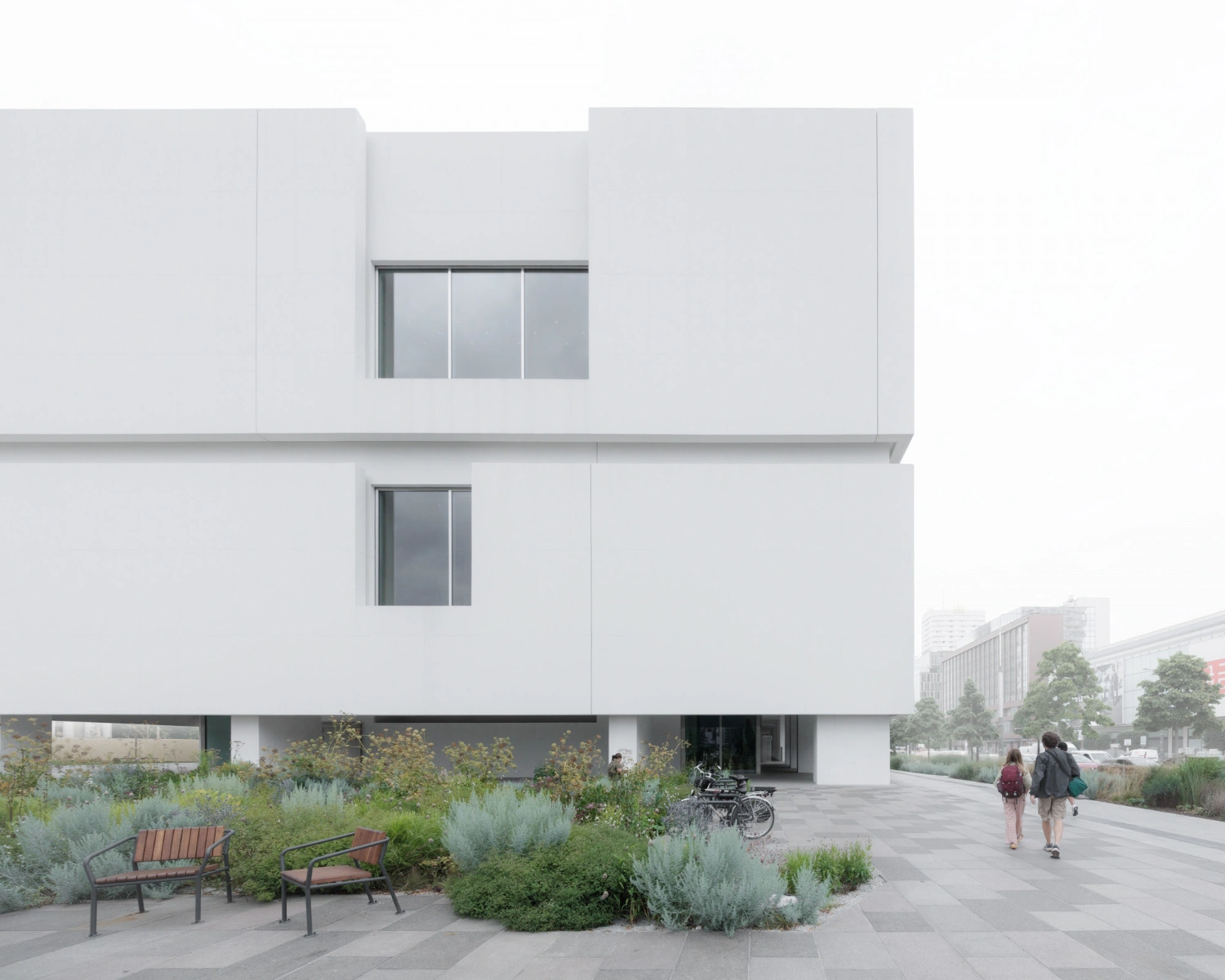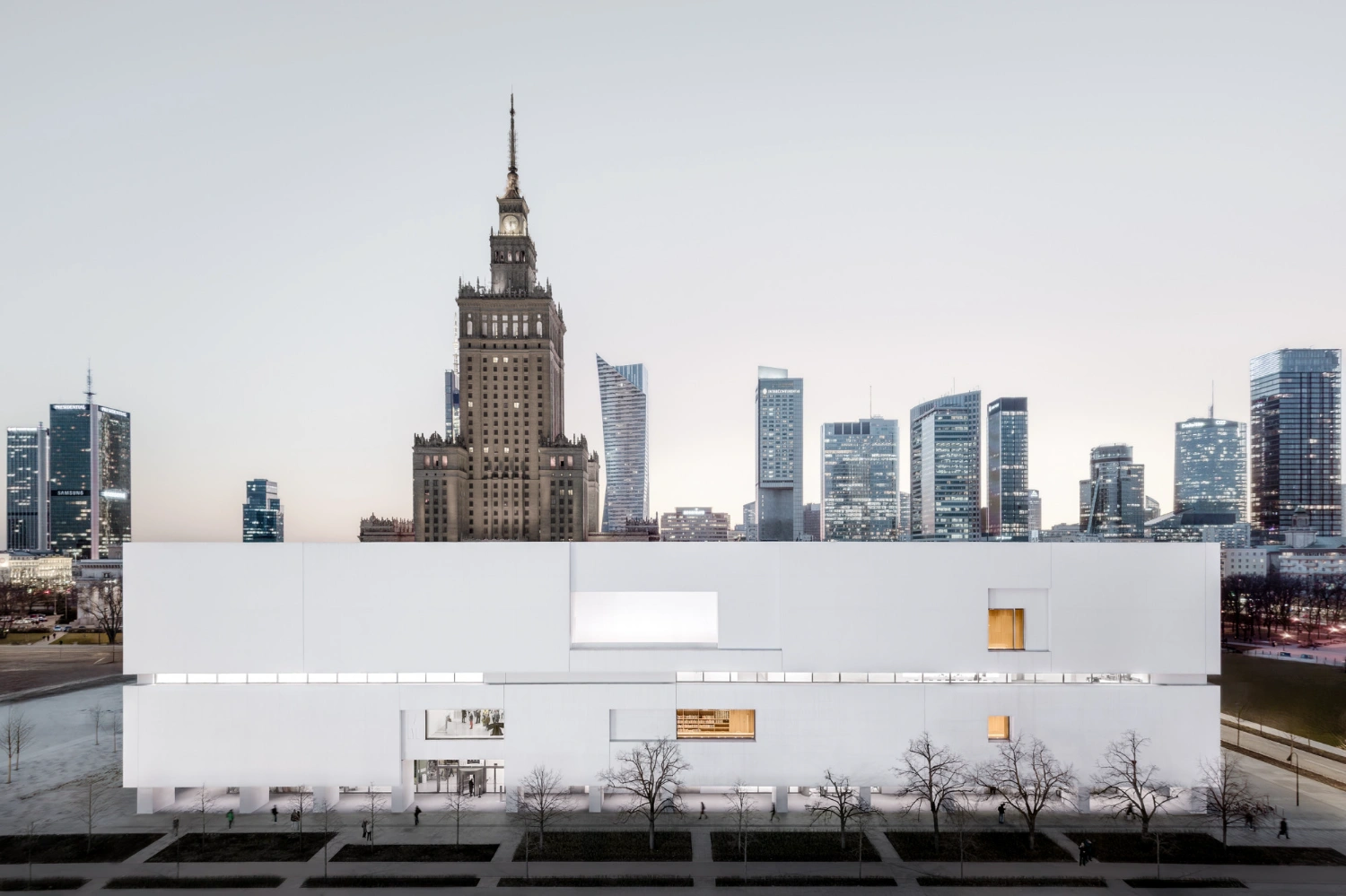Thomas Phifer’s first European building, Warsaw’s new Museum of Modern Art, redefines Plac Defilad with luminous horizontality and civic openness.
After nearly two decades of delays, Warsaw’s Museum of Modern Art has finally opened its doors, securing a permanent home in Plac Defilad. Designed by New York–based architect Thomas Phifer and Partners, the 213,000-square-foot building is both a milestone for the city’s cultural landscape and Phifer’s first completed project in Europe. Rising in crisp white concrete, the museum contrasts with its looming neighbor, the Stalinist Palace of Culture and Science, while rooting itself firmly in the shifting identity of Poland’s capital.
Phifer’s design rejects monumentality in favor of horizontality. Two stacked, rectilinear volumes project an austere simplicity, but within, the building reveals a nuanced choreography of light, scale, and circulation. At its center, a grand double staircase rises beneath a glazed ceiling, conceived not as a procession but as a social space—a place to pause, converse, and look outward toward the city. The ground floor operates like a civic forum, porous with entrances from multiple directions and animated by a café, bookshop, and connections to Warsaw’s transit network.
The galleries above are calibrated for variety. Their proportions range from intimate chambers to soaring 7.5-meter-high volumes, all unified by terrazzo floors and filtered daylight softened through louvres and scrims. Between these exhibition halls, a sequence of “city rooms” clad in warm European ash opens onto expansive windows, framing views of Warsaw as if the city itself were part of the collection. This interplay between art and urban life underscores Phifer’s vision of the museum not as a hermetic container but as an open civic instrument.
This ambition is amplified by the building’s exterior. A continuous arcade wraps the ground level, creating a transitional threshold between the museum and the vastness of Parade Square. Newly planted honey locust trees soften this edge, hinting at the larger redevelopment plans for the plaza, which will eventually include Phifer’s TR Warszawa theatre. In this way, the museum becomes not only a repository for art but also a cornerstone in the ongoing reimagining of Warsaw’s most contested public space.
Inside, the inaugural exhibition, “The Impermanent: Four Takes on the Collection,” unfolds across the new galleries, drawing from MSN’s holdings of more than 4,300 works. It traces shifting interpretations of modernism from the 1950s to today, situating Poland’s artistic trajectory within broader global conversations. Installed within Phifer’s carefully modulated spaces, the works gain new resonance—the architecture heightening rather than competing with the art.
For Warsaw, the opening represents both an end and a beginning. The museum’s long-delayed completion closes a chapter of bureaucratic false starts while launching the city into a new era of cultural visibility. For Phifer, it is a transatlantic breakthrough, cementing his reputation beyond American institutions like Glenstone and the Corning Museum of Glass. Above all, MSN Warsaw demonstrates how architecture can serve as a vessel for civic renewal—pared back, luminous, and open to the rhythms of the city it inhabits.

